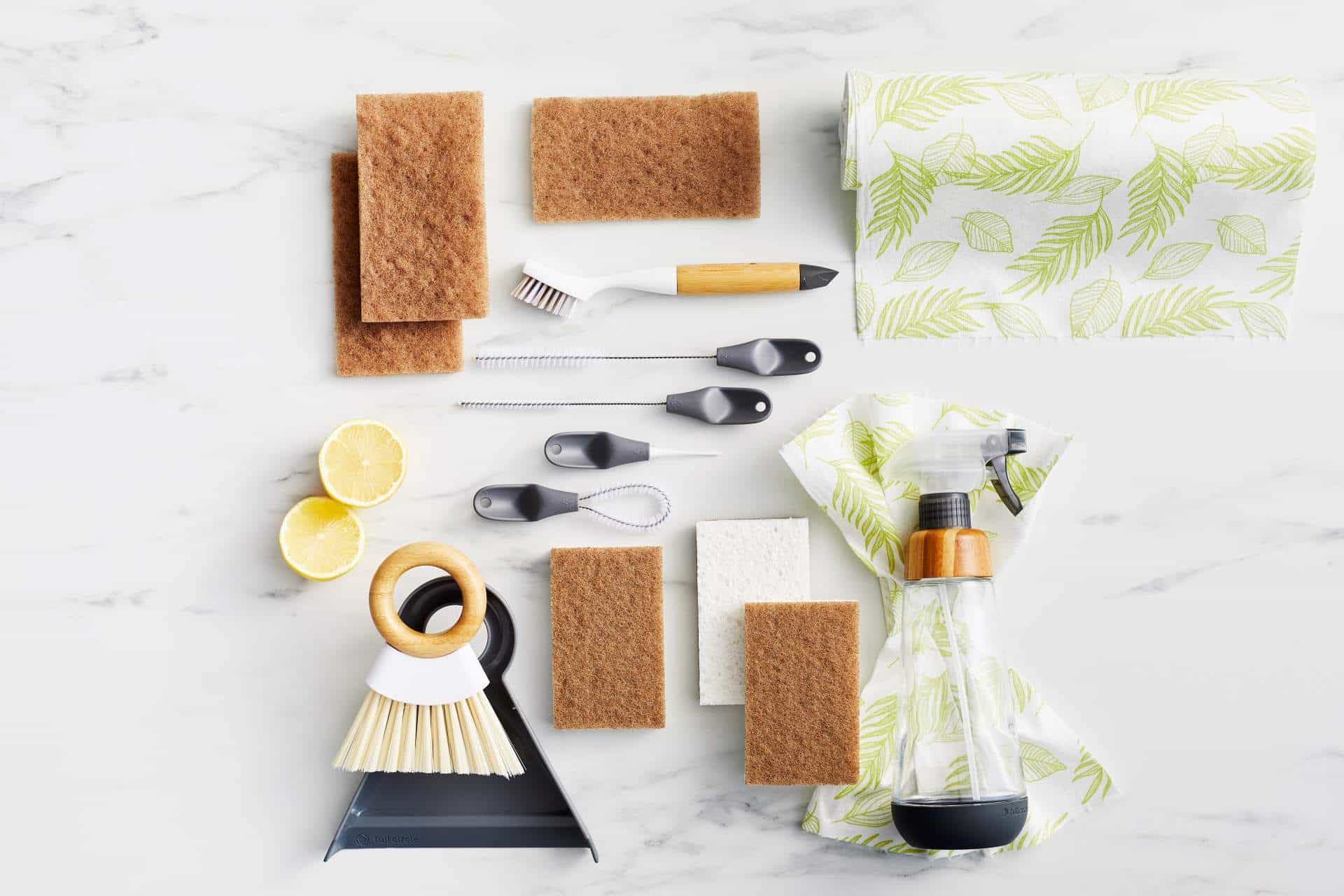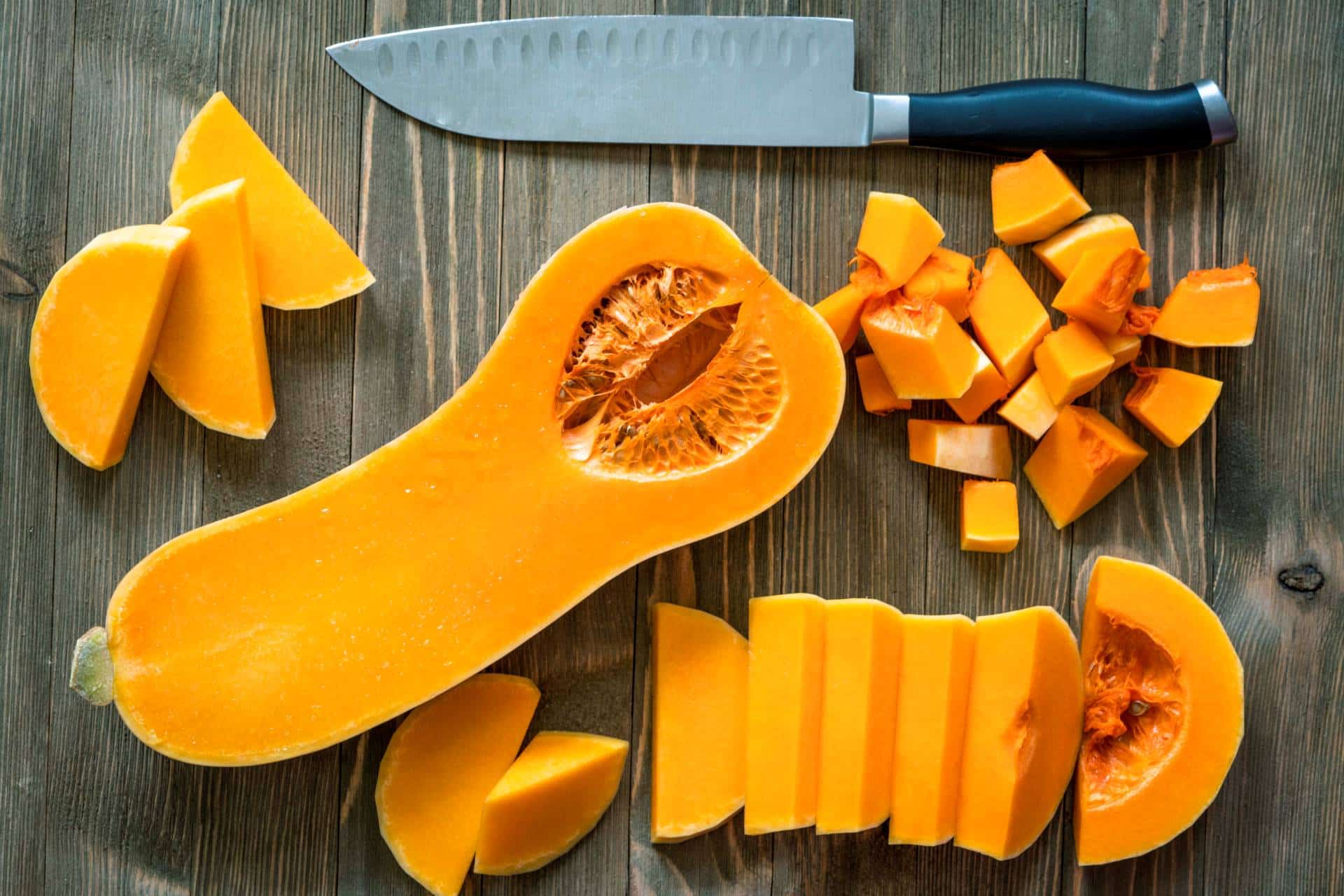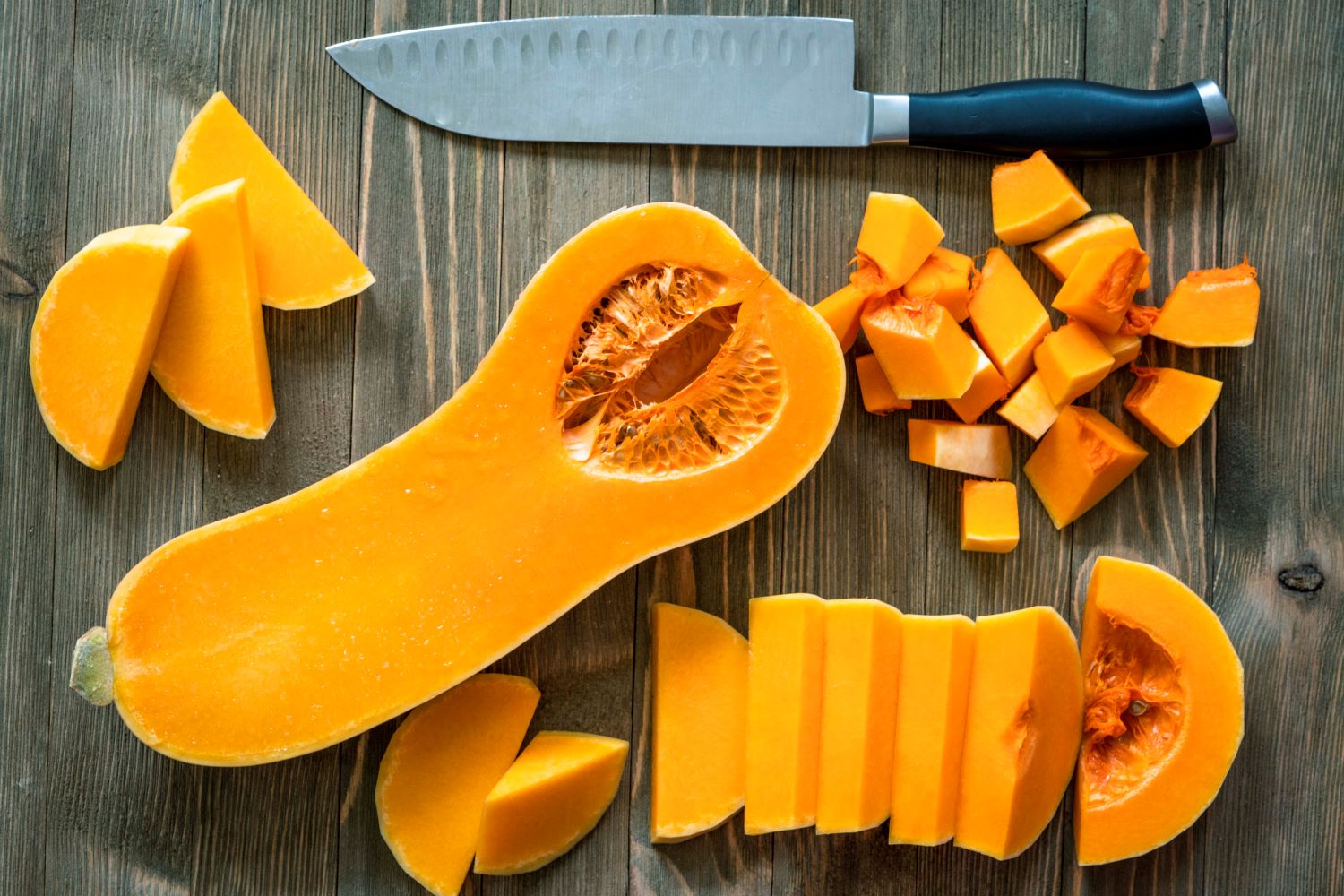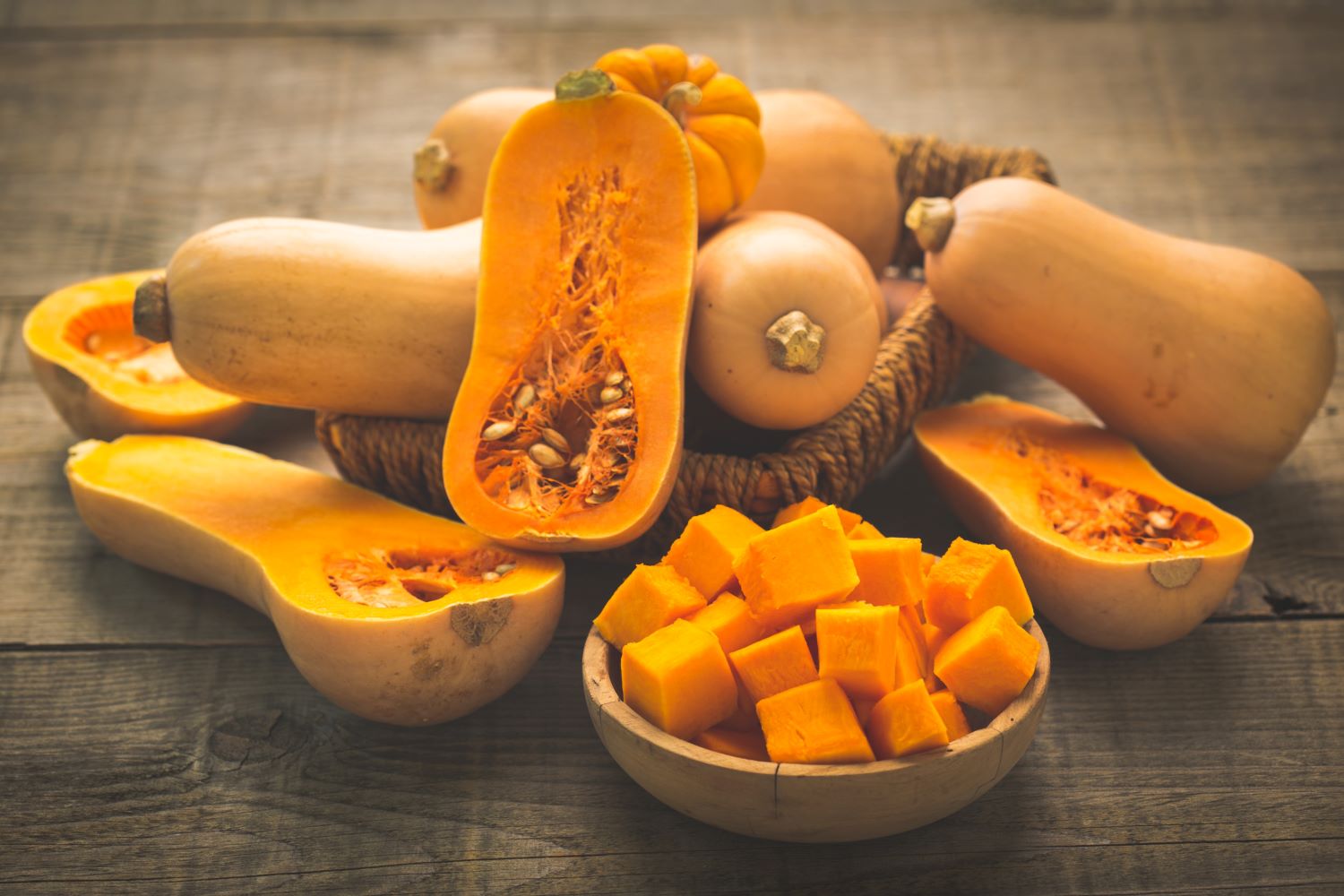A Spring reset.


Butternut squash is a fall-favorite seasonal fruit (yes, it’s technically a fruit—not a vegetable) with a slightly sweet, nutty taste and smooth, fine-grained texture. It pairs well with both sweet and savory flavors and is delicious on its own or incorporated into dishes, too.
Whether you’re exploring butternut squash recipes for soups, sides, pastas, salads or desserts, you’ll have to tackle some butternut squash basics first: choosing the best one at the grocery store, peeling it, slicing it and cooking it.
Read our guide for tips and recommendations on how to pick, cut and cook butternut squash this season, and discover a few new recipes to try.

While butternut squash is typically available all year round at the grocery store, it’s best in the early fall months and into the winter. Follow these tips the next time you’re picking a butternut squash at the grocery store:
A butternut squash should feel pretty heavy for its size. Pick up a few that look similar and feel the difference between them—a lighter butternut squash may not be ripe enough yet.
Butternut squash has a thick skin and starts out yellow or green and changes to beige when ripe. When choosing one at the store, be sure to select one with a creamy tan color. Light surface scratches are normal, but avoid choosing one with soft spots, bruises or cuts. Butternut squash should also have a matte finish. If it’s shiny, it means it was picked too early.
Butternut squash should have a firm, dry stem. Any softness or mold growth may indicate that the squash is overripe.
While a longer neck doesn’t necessarily mean the quality of the squash is better, it will be easier to cut and peel. A “straighter” squash with a smaller bulb and fatter neck also means it has a smaller seed cavity and more meat to use in your favorite butternut squash recipe.
Knock on the side of your squash and check to see if it sounds hollow inside. If so, then it’s ripe for the picking, literally. If it sounds dull, the squash could be spoiled or not ripe enough yet.

To make your butternut squash easier to cut, peel and prepare, consider piercing the skin several times with a fork, then microwaving it for a minute or two to soften it. Then you can get into the real slicing!
Pro Tip: Roast the seeds for a snack! Clean the seeds, pat dry, then toss with olive oil, salt and pepper. Roast on a baking sheet at 325°F for about 10 minutes. They’d also be great in an air fryer.
Cut into cubes, slices or wedges before cooking, if desired.

If you’re looking for the easiest way to cook butternut squash, you may be surprised that none of the prep work listed above is actually required—but, it will take a little more time to cook.
To cook butternut squash whole, simply roast in the oven on a baking sheet for 1 hour and 20 minutes at 400°F. Once it’s cooked (it should easily pierce with a fork), you can slice it open, scoop out the seeds and pull off the skin.
You can also cook butternut squash whole in a large slow cooker. Simply put the whole, uncut squash in a slow cooker and set for 3 to 4 hours on high, or 6 to 8 hours on low—you don’t even need to add water.

After following the prep steps listed above (skipping step 2), you can roast your halves in the oven at 375°F for 45 minutes or until fork-tender.
To roast butternut squash halves, place the two halves on a lined baking sheet, then drizzle with olive oil and sprinkle with salt and pepper. You can bake them skin side down or up, or season with other spices as desired. Sprinkling with cinnamon or adding a drizzle of maple syrup are also great options!
After roasting the halves and allowing them to cool, scoop out the flesh and use it in blended butternut squash recipes, like a creamy Butternut Squash And Apple Soup With Croutons or Roasted Butternut Squash Hummus

Cubing your butternut squash can save some cooking time and is a great way to get crispy, caramelized sides on every bite. To cook butternut squash cubes, simply toss in olive oil, salt and pepper, then roast at 375°F on a lined baking sheet for about 25 minutes or until golden brown and tender.
Cubed butternut squash are perfect for side dishes and main courses, like Farro Risotto With Butternut Squash With Kale Chips or even Rigatoni With Butternut Squash Ragu.
Other recipes with butternut squash to try:
Looking for more cooking tips and recipe inspiration? Check out Sur La Table’s online and in-person cooking classes for some hands-on instruction.
Love all squarches. Butter nut ,& Acorn r to me the best.
Butter ,cinn,.brown, sugar & ? Nutmag it’s so yummy after baking it.
I lve Butter NUT in soup. It give it that umf lol. I Love all veggies. I grew up eating all kinds of viggies & fruits .
I do eat meat but not as much I just like my viggies above all. So reading how to prepare in differ ways its helpful. Thanks for sharing next trip now is for ButterNut Squarch !!